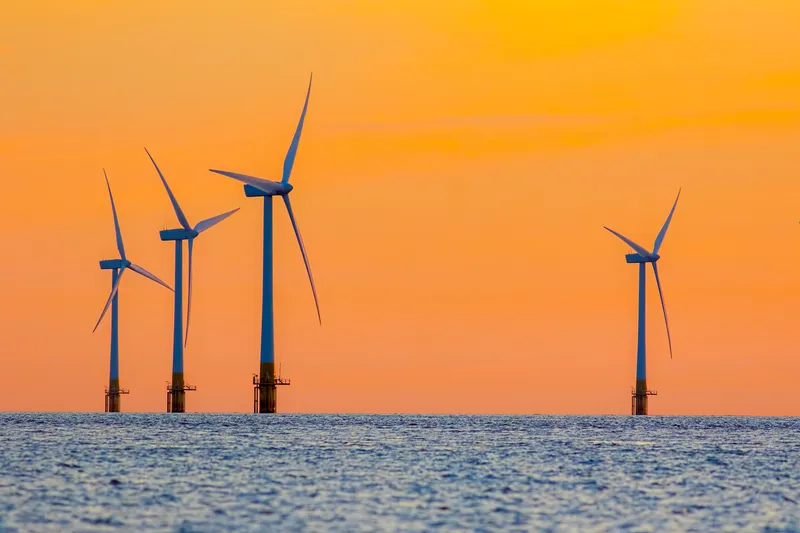Little and Large
Leading renewables developer EDPR is apparently looking to sell down part of its stake in its offshore wind venture Ocean Winds while upping its commitment to the battery storage sector – a crossroads moment. While the negative noises around the offshore wind sector continue to mount, the positive noises around battery storage continue to grow – quite a turnaround from a year, certainly two years ago.

In the one corner, offshore wind projects are large and expensive, with construction costs still rising. Construction delays and cost overruns are not uncommon – disappointing given the clean track record of the sector up to the days of Covid. In the other corner, batteries are smaller and less expensive with costs coming down 30%, perhaps more, in recent years. What's not to like?
Until recently, offshore wind towered over batteries with its regular long-term cashflows and a good construction track record. The battery sector was beset by a bewildering set of revenue streams across the globe open to merchant price risks in many markets and dependent on electricity grids not suited to storage systems.
Of course, the two sectors are complementary. Battery storage is becoming more popular as intermittent renewable power output such as offshore wind continues to grow. And offshore wind provides big lumps of intermittent power.
Ocean Winds, the EDPR and Engie 50/50 joint venture, has been one of the more successful entrants into the offshore wind market over the last decade. It has 2.3GW in operation, 1GW under construction and more than 15GW in development. Equity value is €369m for EDPR.
But renewable developers have been feeling the strain. EDPR share price trades at a 20% discount to invested capital so reducing its debt is paramount.
In a recent earnings call, EDPR CEO Miguel de Andrade mentioned offshore wind six times – once in relation to Moray West in the UK which has been completed within budget. But the five others related to the US with impairments announced.
"Regarding the US offshore, due to the current uncertainty surrounding US offshore projects, and this mainly follows the presidential executive order on January 20, an analysis was conducted to evaluate the impact of potential project delays." As a precautionary measure Ocean Winds booked a €133m impairment.
In contrast de Andrade highlighted batteries. "Something we haven't talked too much about, but it is beginning to play a more critical role in the future of renewable energy and within our portfolio." He said the regulated environment was improving in some markets and contracted revenues were up.
"These are good projects. We're talking about average cash yields of around 13%, low double-digits project IRRs." The pipeline for this developer is big – 200MW in operation, 300MW under construction, 700MW secured and under negotiation and 9GW in both short-term and long-term pipelines.
Perhaps the worst news from the offshore wind sector this year came from Japan. Both Mitsubishi and its partner Chubu recording provisions of US$342m and US$115.3m respectively on contributed and committed amounts on the three offshore wind projects they won in the first round of auction in 2021.
The schemes are not even in construction. The company is reviewing its business plans for the offshore wind projects due to material changes in the macroeconomic environment, citing a "significantly changed" business environment, including inflation and a weaker yen. "We will consider the appropriate next steps after thoroughly examining the results of our review," it said.
News from the battery sector gets better with new financings announced, more tollers coming to the market, countries as such about to tender capacity market-backed deals. In addition, many battery schemes around the world are bolted onto solar schemes. Indeed, in the 56 priority projects announced this week by the Australian government, combined solar/battery schemes are common and some of the battery elements are much bigger than the generation element.
The project finance debt market still, however, sees battery storage as a niche play. In the UK the £2.7bn Inch Cape project financing was backed by 22 lenders. The £568m Seagreen OFTO deal required just four lenders albeit with JBIC taking half.
By contrast, the latest Zenobe £220m deal required 13 banks. Lenders were scaled back and apparently the company wants a big group of lenders going forward. But ticket sizes of batteries are much smaller. The £500m Fidra battery deal will attract between five and 10 lenders.
Banks are still keen on offshore wind. Nearly 30 banks joined the US$4.7bn CVOW deal in the US late last year, even though early in the new year a 9% increase in project costs was announced. In the UK listed funds invested in the battery sector trade at a 45% discount to net asset value despite the favourable noise around the sector.






